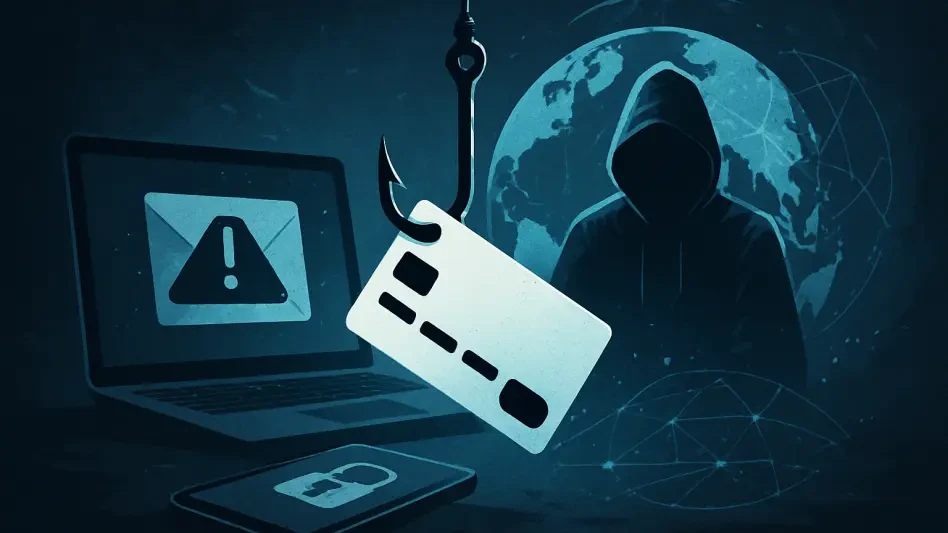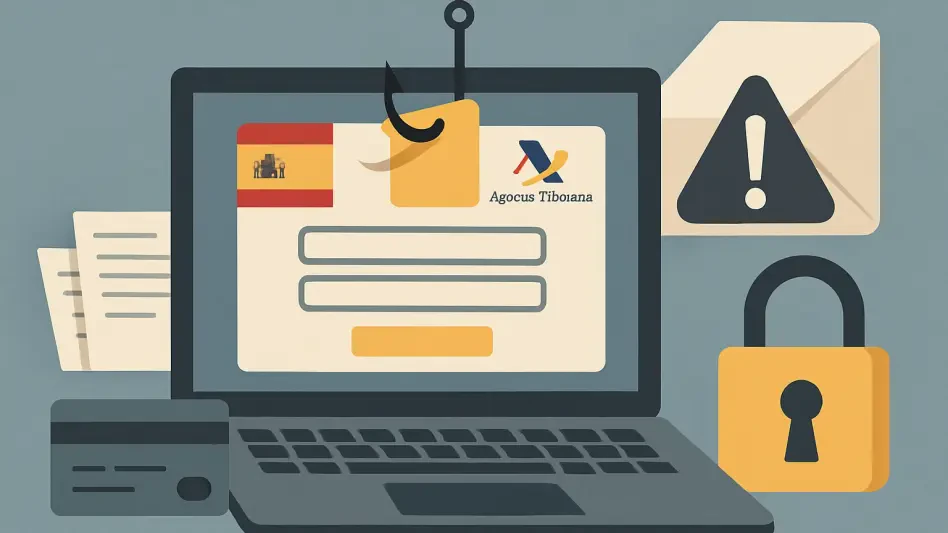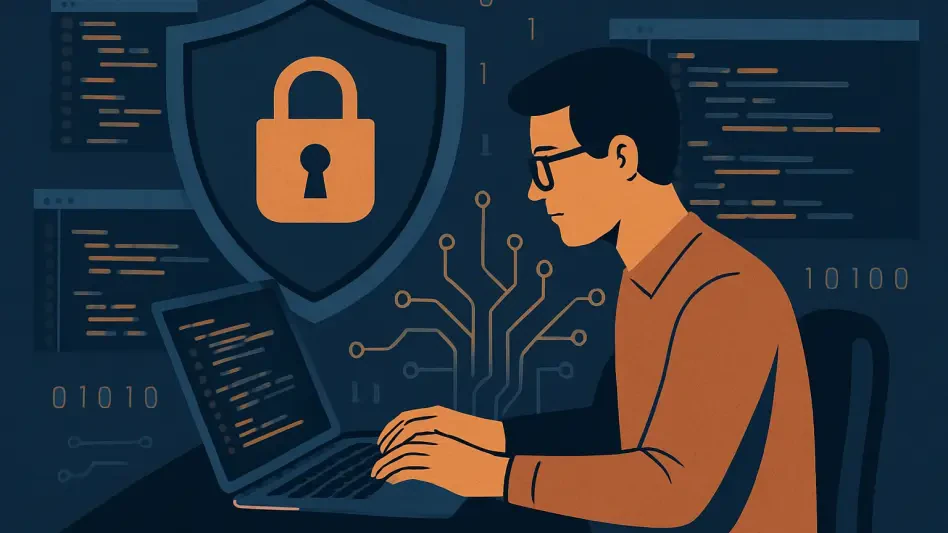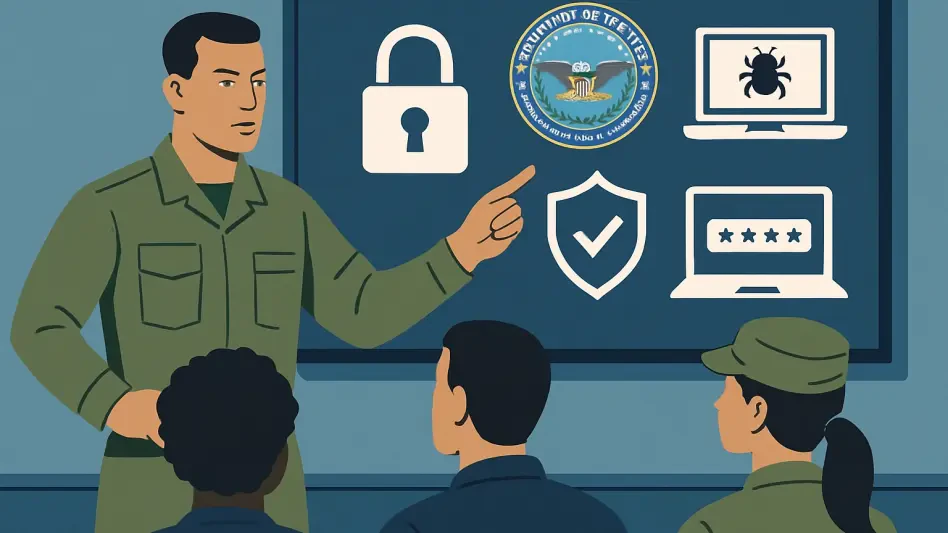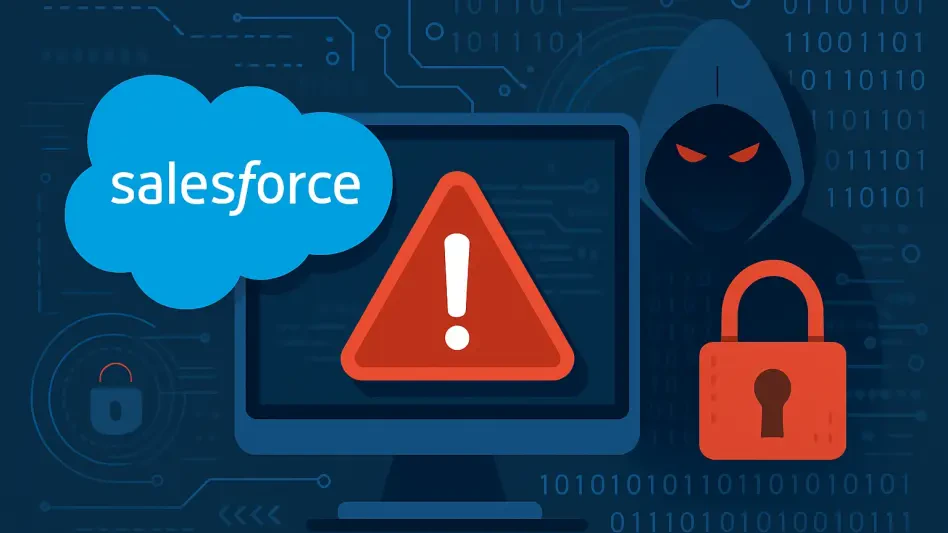In an era where digital threats loom larger than ever, a staggering cybersecurity crisis has emerged, shaking the foundations of online trust across the globe with unprecedented ferocity. A colossal phishing campaign, powered by Phishing-as-a-Service (PhaaS) platforms such as Lucid and Lighthouse, has deployed over 17,500 fraudulent domains impersonating 316 well-known brands spanning 74 countries. Uncovered through meticulous investigation by cybersecurity experts, this operation exposes the dark evolution of cybercrime into a commercialized, easily accessible enterprise. This isn’t merely about daunting statistics; it’s a stark reminder of how effortlessly even novice attackers can exploit sophisticated tools to mimic trusted entities in sectors like finance, government, and logistics. With subscription-based phishing kits available at prices as low as $88 weekly, the barrier to launching devastating attacks has never been lower. This article delves into the vast scale of this threat, the intricate tactics employed by these platforms, the hidden networks behind them, and the pressing need for advanced defenses to counter this growing menace.
Unpacking the Global Reach of PhaaS Threats
The magnitude of this phishing operation is nothing short of astonishing, as it targets a vast array of 316 brands across 74 countries, demonstrating an alarming adaptability to diverse regional contexts and languages. Netcraft’s findings highlight how platforms like Lucid and Lighthouse have enabled attackers to cast a wide net, impacting users and businesses on an unprecedented global scale. In a peak moment earlier this year, phishing hostnames linked to PhaaS tools accounted for 13.5% of all detected phishing sites, marking a significant surge in such activities over recent years. This trend underscores how the commercialization of cybercrime, through affordable subscription models ranging up to $1,588 annually for premium access, has accelerated the proliferation of these attacks. The ease of access to such powerful tools challenges conventional security frameworks, as attackers no longer need deep technical expertise to execute sophisticated scams that erode trust in digital interactions worldwide.
Equally concerning is the strategic focus on industries that handle sensitive data, such as banking, government services, and postal operations, making the potential fallout from these attacks particularly severe. The global nature of the campaign means that no region is immune, with phishing domains tailored to mimic local brands and exploit cultural nuances to deceive unsuspecting victims. This level of customization amplifies the threat, as users are more likely to fall for scams that appear familiar and legitimate. Moreover, the sheer volume of over 17,500 domains illustrates the industrial scale at which cybercriminals operate, leveraging PhaaS platforms to automate and scale their malicious efforts. This democratization of phishing tools has shifted the landscape, enabling a flood of attacks that overwhelm traditional detection methods. As these campaigns continue to grow in scope, the urgency to develop robust, adaptive defenses becomes paramount to protect vulnerable sectors and maintain confidence in online systems.
Dissecting the Sophisticated Mechanics of Lucid and Lighthouse
Diving into the operational intricacies, Lucid and Lighthouse emerge as highly advanced PhaaS platforms designed to maximize deception while evading scrutiny. Lucid, tied to previously identified cybercrime patterns, focuses on 164 brands across 63 countries, employing cunning anti-monitoring techniques to hide its true nature. Phishing pages are revealed only under specific conditions, such as accessing predetermined URLs or using mobile user agents, while other visitors are diverted to seemingly harmless fake online shops selling items like clothing. This clever disguise helps Lucid bypass automated security scans and casual observation, allowing attackers to operate under the radar. The platform’s design prioritizes ease of use, enabling even those with minimal skills to launch convincing attacks that exploit trust in well-known entities, thereby amplifying the potential for widespread damage across digital ecosystems.
On a parallel track, Lighthouse positions itself as a premium offering, developed by an individual known as WangDuoYu, targeting 204 brands in 50 countries with enhanced capabilities. Its subscription costs reflect a suite of advanced features, including customizable templates crafted to steal two-factor authentication credentials, a critical asset in breaching secure accounts. Like its counterpart, Lighthouse employs deceptive fronts, often displaying a quirky fake shop template to mask its malicious intent from prying eyes. The sophistication of these tools lies not only in their technical prowess but also in their user-friendly interfaces, which lower the entry threshold for cybercriminals. This blend of innovation and accessibility transforms phishing from a niche activity into a mainstream threat, challenging cybersecurity professionals to rethink detection and mitigation strategies. As these platforms refine their evasion tactics, the gap between attacker capability and defender readiness continues to widen, demanding urgent innovation.
Exploring the Networked Underworld of Cybercrime
Beyond individual platforms, a deeper concern lies in the interconnected fabric of cybercrime that fuels operations like Lucid and Lighthouse. Investigations reveal striking overlaps between these two PhaaS services, particularly in their near-identical anti-monitoring pages, suggesting either direct collaboration or shared resources among the criminal entities behind them. Further connections to other known groups, such as Haozi, emerge through shared communication channels on platforms like Telegram and common infrastructure elements. This web of relationships points to a broader ecosystem where cybercriminals exchange tactics, tools, and insights to enhance their collective efficiency while minimizing individual exposure to risk. Such collaboration complicates efforts to disrupt phishing campaigns, as dismantling a single platform does little to impact the overarching network that sustains these threats.
This interconnectedness also highlights the resilience of modern cybercrime, where shared knowledge and infrastructure enable rapid adaptation to countermeasures. As one operation is neutralized, others within the network can quickly fill the void, leveraging lessons learned to refine their approaches. This dynamic creates a cat-and-mouse game for cybersecurity experts, who must contend with not just isolated threats but an entire ecosystem designed to evolve and persist. The implications are profound, suggesting that isolated takedowns are insufficient without addressing the underlying channels and resources that bind these groups together. A more holistic strategy, targeting shared infrastructure and communication hubs, becomes essential to disrupt the collaborative mechanisms that empower platforms like Lucid and Lighthouse. Until such networked structures are dismantled, the cycle of phishing innovation and proliferation is likely to persist, posing ongoing risks to global digital security.
Reinforcing Defenses Against Evolving PhaaS Threats
The emergence of sophisticated PhaaS platforms necessitates a fundamental reevaluation of cybersecurity strategies to counter their dynamic and pervasive nature. Traditional reactive approaches, which often lag behind rapidly evolving threats, prove inadequate against tools like Lucid and Lighthouse that continuously adapt to bypass existing defenses. In response, Netcraft has pioneered targeted automation techniques to enhance the detection of phishing URLs by correlating campaign patterns and identifying shared infrastructure traits for swift disruption. This proactive stance reflects a broader imperative within the cybersecurity community to shift focus toward real-time monitoring and intelligence-driven solutions. Staying ahead of low-skilled attackers, empowered by accessible and powerful PhaaS kits, requires a commitment to innovation that outpaces the tools and tactics of cybercriminals.
Furthermore, the global scale and interconnected nature of these phishing campaigns underscore the need for international collaboration and information sharing among cybersecurity stakeholders. No single entity can combat this threat in isolation, as attackers exploit jurisdictional boundaries to evade accountability. Building coalitions that unite governments, private organizations, and research bodies can facilitate the development of unified standards and rapid-response mechanisms to mitigate phishing impacts. Additionally, raising awareness among end users about recognizing phishing attempts, such as suspicious URLs or unexpected requests for sensitive information, remains a critical line of defense. As PhaaS platforms lower the barrier to cybercrime, empowering individuals with knowledge and tools to protect themselves becomes as vital as technical countermeasures. Only through a multifaceted approach can the digital realm be safeguarded against the relentless advance of commercialized cyber threats.

